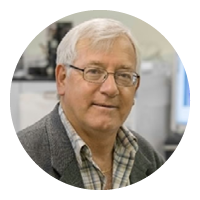Philip Marriott
Monash University
- Conference: Analytical Conference
- Presentation: Keynote lecture: Designing High Resolution Separations for Enhanced Characterisation of Petrochemical Samples
- Presentation Time: Day1 09:35


Professor Marriott obtained his PhD from LaTrobe University, Melbourne, then undertook postdoctoral research in Organic Geochemistry (with Professor Geoff Eglinton) at the University of Bristol. He took an academic appointment at the National University of Singapore, then returned to Australia. He is now a Professor at Monash University, Melbourne.
He has had extended professorial visits to China, Portugal, Korea and recently in Brazil at the Federal University of Rio de Janeiro. His primary research is in comprehensive 2D and multidimensional gas chromatography, and mass spectrometry, covering fundamental development and a broad applications base, including petrochemicals, essential oils, foods and pesticides.
The analysis of petrochemicals has invariably employed leading-edge separation technologies and advanced solutions for detailed chemical analysis, whether it be multidimensional process analysers, supercritical fluid separations, or high-resolution capillary GC‒MS. In a crude oil sample, nature contrives to present the most difficult separation task for the analyst; in down-stream products, the legacy of the initial sample’s complexity may still remain. This is fertile ground for development of innovative and powerful separation solutions; this challenge exercises the best capabilities of the analyst.
We have contributed a number of new approaches to overall sample ‘global profiling’, with strategies to provide a best-case separation goal. These are based on well-established multidimensional gas chromatography (MDGC), and newer comprehensive two-dimensional GC (GC×GC) methods. We are interested in pushing these techniques to the limit of separation power by integrating additional dimensions of separations. We use multiple sampling strategies incorporating microfluidic switching, from a 1D column to a 2D column, with cryogenic zone compression and fast modulation to provide high efficiency for target sample analysis. This was demonstrated for oxygenated component identification in thermally stressed algae-derived jet fuel. 1D GC-MS was unable to identify these components. A similar approach was used for high sulfur oil shale samples. This design describes comprehensive MDGC incorporating multiple repeat injections with a shifted sampling strategy, to cover the whole sample. A further advanced mode using more than 2 columns that we call hybrid GC×GC-MDGC, functions as an on-line matrix clean-up method, or allows unique profiling of target chemical classes in ways never before possible. The role of these tools for discovery and improved characterisation will be described.